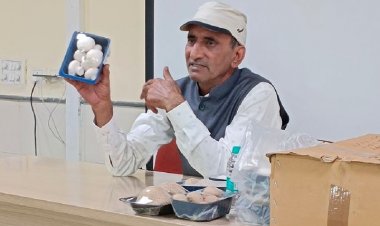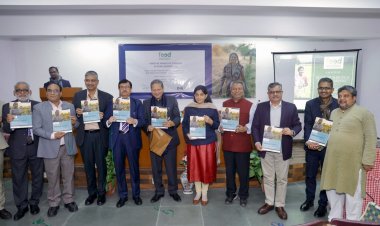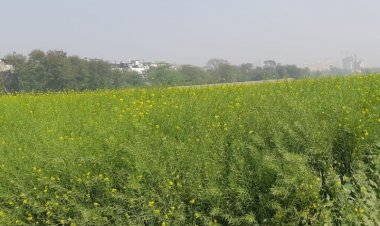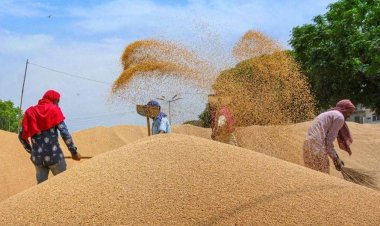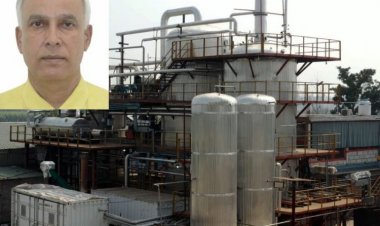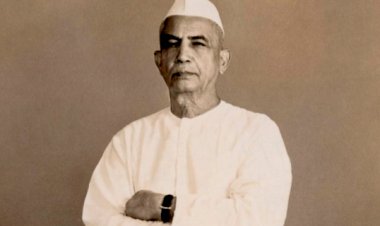109.78 lt wheat procured so far; fear of decline in production may ruin huge export possibilities
According to the FCI, a total of 109.78 lt of wheat has been procured in the country so far. The figures that have come till now from the states of Punjab, Haryana and Madhya Pradesh, the largest procurers of wheat, show signs of the procurement remaining much less in these states than that last year. Given this situation, there seems no possibility of the government meeting its procurement target of 444 lt.
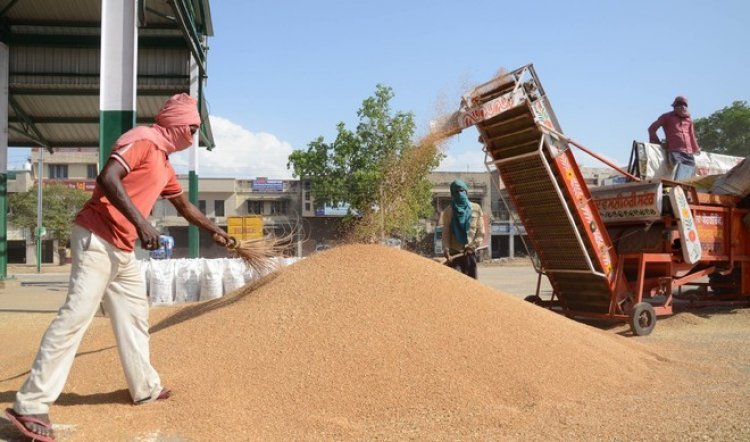
The government recently said that India was ready to fulfil the demand for wheat in the world if the World Trade Organisation (WTO) allowed it to do so. But it seems there will be no need for such an approval anymore because the way there have been reports of productivity getting affected due to the rise in temperature in March and April of the current Rabi season (2022-23) suggests that the total wheat production in the country will remain far less than the government estimate of 11.13 crore tonnes.
One can see such signs in the figures related to the procurement of wheat by the government till 20 April 2022 in the current Rabi marketing season (RMS). According to the data released today by the Food Corporation of India (FCI), a total of 109.78 lakh tonnes (lt) of wheat has been procured in the country so far. The figures that have come so far from the states of Punjab, Haryana and Madhya Pradesh (MP), the largest procurers of wheat, show signs of the procurement remaining much less in these states than that last year. Given this situation, there seems no possibility of the government meeting its procurement target of 444 lt.
This may have a direct impact on the wheat stock in the central pool and even on the government scheme of free distribution of foodgrains. The situation may even ruin the huge export possibilities. However, experts say that the WTO has no authority or provision as such to allow exports. Rather, the rising exports of agri produce from India have led several countries to lodge complaints at the trade regulatory body.
State-wise Procurement of Wheat for RMS 2022-23
(figures in lakh tonnes)
States/ UTs Procurement
Punjab 55.25
Haryana 32.39
UP 0.51
MP 21.58
Bihar 0.00
Rajasthan 0.01
Uttarakhand 0.01
Chandigarh 0.03
Delhi 0.00
Gujarat 0.00
Jharkhand 0.00
Maharashtra 0.00
HP 0.00
J&K 0.00
West Bengal 0.00
Total 109.78
*RMS 2022-23 is under progress, data up to 20.04.2022
Various facts are emerging with regard to the wheat production this year and farmers in Punjab and Haryana are speaking of a decline in production by up to 15 per cent. Similar reports are coming from Uttar Pradesh (UP), too. However, the government has not said anything officially in this regard. There had been a DAP availability crisis during the sowing for the Rabi season this year, which is likely to affect production directly. A scientist at the Indian Council of Agricultural Research (ICAR) says that lesser consumption of Di-Ammonium Phosphate (DAP) directly impacts tillering in wheat. (Tillering is a physiological process of continuous underground branching of compact node joints of the primary shoot. It gives the crop the necessary number of stalks required for good production.) Subsequently, there was a sudden rise of temperature in March at a time at the stage of ripening when milk turns into the kernel. Excessive heat has led to the shrinking of the kernel and one can see its direct impact in the form of a decline in production.
Due to these circumstances, the government procurement of wheat this year is likely to remain even less than 300 lt as compared to the 433.44 lt procured last year. According to the FCI data, of the total wheat procurement of 109.78 lt by the government till April 20, 55.25 lt of wheat has been procured in Punjab. The wheat procurement in Haryana stands at 32.39 lt while that in MP has been 21.58 lt. The government has procured 51,000 tonnes of wheat in UP, 3,000 tonnes in Chandigarh and 1,000 tonnes each in Rajasthan and Uttarakhand. The procurement in other states has been nominal or negligible as there is a zero written against their names in the FCI data.
Of the 433.44 lt of wheat procured by the government in all last year, the share of Punjab was 133.22 lt, that of Haryana 84.93 lt, MP 128.16 lt, UP 56.41 lt and Rajasthan 23.40 lt. In Bihar, 4.56 lt of wheat had been procured. The procurement figures for the current year themselves tell the story.
Ajay Vir Jakhar, the head of the Bharat Krishak Samaj, tweeted recently that he expected a “15 per cent wheat yield loss due to heatwave.” He also expects “over 25 per cent shortfall in wheat procurement by FCI in Punjab.” According to him, “Across India, wheat procurement by government agencies for food security purposes could be less by nine million tonnes over last year.”
Gurbux Singh, a farmer from the Bimbar village of Bhawanigarh tehsil in Sangrur district of Punjab, said to Rural Voice, “The yield has come down to nearly half that last year. Only 15 quintals have been produced in an acre while this used to be 20-22 quintals in normal years.” He said that some of the farmers got a yield of only 10 quintals per acre. Jitendra Hudda, a farmer from the Khedi Bairagi village of Shamli district in UP, said, “The yield has suffered by 10-15 per cent due to the early rise in temperature and yellow rust.”
Wheat is also being harvested early this year and a rapid change in the procurement figures does not seem possible in the major procuring states. Besides, exporters are also buying wheat due to the bullish export market and domestic traders are active after a long time in the hope of better prices. This has led to wheat prices going up to Rs 2,200 per quintal in several states as against the Minimum Support Price (MSP) of Rs 2,015 per quintal. This has a direct bearing on the procurement by the government. India exported more than 70 lt of wheat last year while reports of export deals of about 40 lt have come so far this year.
On the other hand, wheat stocks are at a three-year low in the central pool. Rural Voice carried a detailed report on this recently. The stocks were at 190 lt in the central pool on April 1. However, buffer norms mandate a requirement of only 78 lt in the central pool on the said date.
If the government is able to procure 300 lt of wheat, it will be nothing short of an achievement. However, some experts predict this to be in the range of 250 lt. Now, 260 lt of wheat will be required in the whole year under PDS. Besides, the government has extended the Pradhan Mantri Garib Kalyan Anna Yojana (PM-GKAY) by another six months. Under this, 5kg of foodgrains is distributed free to each beneficiary every month. This will require 110 lt of wheat for six months. If the scheme is extended for the entire year, the requirement will go up to 220 lt. Now, if we add the 300 lt of wheat that would be procured to the initial stock of 190 lt in the central pool, the availability will come to about 490 lt. Given this situation, if the procurement does not go beyond 250 lt, the wheat stocks in the central pool may go down below the mandatory 78 lt in April 2023.
In the event of the government procurement not being adequate in the circumstances mentioned above, possibilities like extending the period of free distribution of wheat under the PM-GKAY and making the foodgrains available from the central pool may need a serious re-think.
On the other hand, importers are raising questions about the quality of wheat from India and paying lower prices for it. Export deals for Indian wheat are being negotiated at $335-340 per tonne at present while wheat of the same quality from other countries, including Argentina, is selling at $400 per tonne.
We need to manage properly our own necessity first instead of providing foodgrains to the world. And the government should come up with detailed information on wheat production as soon as possible.



 Join the RuralVoice whatsapp group
Join the RuralVoice whatsapp group


















